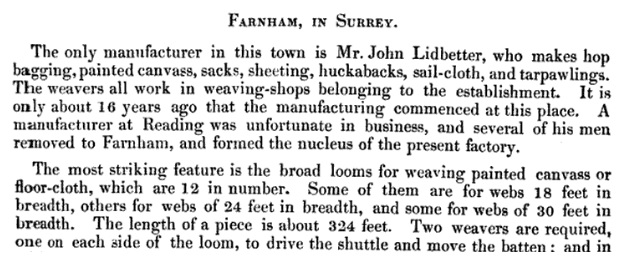 What can I say? It’s been quiet. Not sure there’s even going to be enough in the news for a proper update. Me, I didn’t even have one drink on Christmas Day… but only because the celebration falling on a Monday means we have Christmas Eve, Tibb’s Eve and a Friday night after the end of work to get through first. Don’t worry. I was sensible. Not like you lot, I suppose. Or perhaps just like you. I can never tell anymore. I’m a bit tired at this point, bracing for the final two or three events before I can get into the seed catelogues properly. I feel a bit like the inadvertantly hilarious AI generated Santa right there. See, someone did a Santa from every province and the original Nova Scotia Santa was clearly a screw up as instead of being cheery like the rest it looks like the guy hired by Mr. Lahey from Trailer Park Boys for a drunk Xmas party. It was quickly swapped out for something more downtown trade association… aka boring… because… Canada…
What can I say? It’s been quiet. Not sure there’s even going to be enough in the news for a proper update. Me, I didn’t even have one drink on Christmas Day… but only because the celebration falling on a Monday means we have Christmas Eve, Tibb’s Eve and a Friday night after the end of work to get through first. Don’t worry. I was sensible. Not like you lot, I suppose. Or perhaps just like you. I can never tell anymore. I’m a bit tired at this point, bracing for the final two or three events before I can get into the seed catelogues properly. I feel a bit like the inadvertantly hilarious AI generated Santa right there. See, someone did a Santa from every province and the original Nova Scotia Santa was clearly a screw up as instead of being cheery like the rest it looks like the guy hired by Mr. Lahey from Trailer Park Boys for a drunk Xmas party. It was quickly swapped out for something more downtown trade association… aka boring… because… Canada…
Speaking of surprises, Boak and Bailey pulled a surprise – after saying they were taking the rest of the year off but then sending out beer links by newsletter. They even sent me a hello in the fine print.* Cheery them!
Apparently it’s hard to break this habit, especially when this is a quiet time of year for many people, prompting interesting blog posts to emerge. So, just for you – and thank you once again for Patrooning us – here are a few links worth checking out.
They also posted their Golden Pints Awards, which was sort of a bigger thing a few years ago back when – and an excellent thing it was too – when people shared their favourites in any number of categories which fitted their personal experiences for the year. I last did them in 2018 and 2021 which means back when was not so so far back, I suppose. Here’s one for this year by an Australian podcast, too. It’s early as yet so you have until Monday to post your thoughts. Anyway, I did like this observation of theirs which captures the mood one aspires to in such things:
On one occasion we arrived shortly after someone had vomited everywhere leading to an immediate clear out of the premises. The Blitz spirit overtook those who remained. Then a mouse appeared and, high on floor cleaner, began to run in circles around the middle of the pub. On another occasion snooker player and DJ Steve Davis was sitting at the bar. Well, fair enough. And then there was the time someone asked the barman for a saw, hammer and nails and, between pints, made a wheelchair ramp out of a sheet of MDF.
And Alistair announced his beer of the year and it was perhaps less of a surprise given he had worked out three finalists but I do admire his standard for selection:
Choosing a single winner from these three beers is, as it seems to be every year, difficult, as were any one of them a permanent feature of drinking central VA, I would likely drink it an awful lot. However, only one of them could actually claim to have been drunk fairly regularly this year, and so the Fuggled Beer of the Year is…Tabolcloth Vollbier from both Selvedge Brewing and Tabol Brewing. It was simply wonderful, and I hope it makes a comeback when Selvedge open up in their new venue in the new year.
Good. Given all of the beers of the year you read about in most periodicals are frankly just rookie of the year awards, I am rooting for Alistair’s wish that it becomes a regular feature. I wonder how the whole “rookie of the year” as champion thing has led to the novelty obsession which has, you know, let to the superficiality and amnesia.
There’s more! Pellicle posted its top ten stories of 2023 and DC Beer had an extended year end feature on the US Capital scene with many of those involved sharing their thoughts – including this comment from the Brandings of Wheatfield that caught attention:
Moving beyond style guidelines written for another time and place continues its positive momentum. The best is yet to come for truly local beer, wherever your local is. We’re seeing progress experimenting with ingredients from here and methods responsive to them. Local beers will be different than predecessors from afar – even if they share a similar style name – and that’s something to celebrate.
Is that a call for chaos or a call for honesty? Speaking of which, The Beer Nut has wrapped up his series on the 12 top Irish brewers of 2023 with a post on those he ranked 13th to 24th including one making a coffee blonde pale ale that illustrates his excellence in matters reportage:
I’ve never seen the like. It is more or less blonde, with a polished-copper pink tint. The pour seemed a little flat, only reluctantly forming a head and offering no more than a gentle sparkle. There’s an aroma of coffee of a certain kind; a cold pouch of ground beans, with nothing warm or inviting about it. In the flavour it’s predominantly a pale ale: they didn’t go too far away with those hops and there’s quite an old-school American, or even English, tang of earthiness, which tastes like Cascade to me, even though there’s Strata and Amarillo in here as well. I couldn’t taste any of their fruitiness. The coffee is surprisingly complementary to this, again not heavy on the roast, or concentrated or oily; little more than a seasoning, in fact, adding a different sort of dryness to an already quite dry base beer. At only 5.1% ABV there’s not a lot of complexity on offer, and while it’s no revelatory taste experience, the experiment does work, giving you something interesting and worthwhile for your trouble.
And The Mudge himself shared his set of year end thoughts in a two parter including these considerations on one beneficial regulatory change affecting the UK brewing trade:
While one might object to the absolute level of duties, the general principle must be correct. It’s rare to see government carrying out a root-and-branch reform of anything nowadays, rather than merely tinkering around the edges… A significant aspect of these changes was to raise the threshold for a lower rate of beer duty from 2.8% ABV to 3.4%, a level at which it is much easier to brew palatable beers. As I reported earlier this month, there has been significant movement to reduce the strength of beers a little above this level, although it remains distinctly patchy, and the jury is still out on to what extent drinkers will be happy to accept lower-strength beers. The duty savings are so significant, though – over 50% – that the 3.4% category is only going to grow in future.
That’s new analysis right there. Jeff came out with a surprisingly hopeful year ender on the state of beer writing but two cheers for the optimism after this summary at the outset which I share at some length:
Here at the end of the year, a number of folks have been taking stock of their various writing ventures. Three I noted were Boak and Bailey, Courtney Iseman, and the duo behind the recently-launched Taster Tray (Kendall Jones and Adam Robbings), who summed up the mood of the three this way:
“In other ways, the kind of stuff we reported (over and over again) told us that maybe it was a bit irrelevant in today’s craft beer world, where more people than ever drink craft beer but fewer people harbor a deep, hobby-like passion for it. More consumers, less enthusiasts.”
These sentiments get at a reality deeper than just the fortunes of individual writers (or writing teams). It has been hard to make a living as a journalist/writer for—well, forever, but certainly in the cheap-content internet age. But something else is happening as well. As beer goes through the transition I described on Wednesday, everything it touches is transitioning, too. In the case of journalism, two trends in particular made things hard in 2023: people are less curious and engaged about beer (and that means everything from homebrewing to tasting to history and travel to business) at the same time that there is so much already available out there for the interested reader.
I think that last bit is key. For while it is truly amazing how many beer writers (especially those scrambling doing it for meagre pay) do not have a good look at what has already been written about a topic before jumping in (so therefore make some glowing gaffs) the sheer wonder that are these internets is that it is auto-archiving and auto-indexing. Yes, there is still a huge amount of researching and writing to be done but it is being done on the collective shoulders of others whether those standing up there admit it or not! It’s all a collective tree of knowledge. So be a twig! And have aspirations to be a bit of a branch even. I mean, look at Gary. Four posts on the “beer jacket” trend of the first half of the 1900s. Who’s not interested in that sort of digging? Well, paying periodicals for sure… but are you interested in writing or interested in eating? Hmm???
And it’s good to acknowledge that all this re-examination of what we beer scribblers are to do with our brief alloted span on this planet as we stare at our keyboards** is all happening in a contraction rather than a transition, during an overall drop in interest in beer. Business Insider has dubbed this the worst year in beer in a quarter century. With good cause as the always reliable New York Post explains:
Sales declined by more than 5% in the first nine months of the year, dragged down not only by the backlash and boycotts against Anheuser-Busch-owned Bud Light but the changing habits of younger drinkers, according to Beer Marketer’s Insights. Overall beer sales have also been hit as millennials and Gen-Zers ditch the brews for other alcohol-infused products like canned cocktails or simply drink less than previous generations. Sales of craft beer, which emerged as a huge growth engine in the late ’90s, have also been down for three of the past four years, according to Steinmann. “This is an industry-wide, five-alarm fire,” Craig Purser, president of the National Beer Wholesalers Association, said in a speech to wholesalers at a convention in October, according to the Wall Street Journal report.
AKA: “fewer consumers, less enthusiasts.“Yikes! Is it too late to start collecting stamps? I could be a stamp expert. Maybe… One thing I can admit is that I like about Cider Review is how it is much more focused on the beverage as agriculture than you see in the beer press – with good reason. I grew up in a world of ag commodity prices and the weather on the zones of the Grand Banks being regularly reported on the radio and TV. So happy was I to see their year end review was as much about the crop than anything:
As we conclude our collective summary of Harvest 2023 here on Cider Review, Hogmanay is fast approaching; the weeks of Wassail just around the corner, followed by the pruning cycle for slumbering fruit trees bathing in their Winter chill hours. It’s as beautiful a time of year in the orchard as any – if you can, do go for an explore in one mid-morning, with a strong hoar frost settled over the skeletal branches of Dabinett and Stoke Red, Porter’s Perfection and Ellis Bitter. You won’t be disappointed. Onto then, the final batch of producers who have very generously taken the time out of their harvest schedule (now mostly finished I do hope) to answer our questions here on Cider Review.
Speaking of ag, The Greenock Telegraph, the newspaper of record in the family’s seat in the old country, has certainly been paying attention and shared some odd Scots law including one related to a coo:
Based on the Licencing Act of 1872, it is an offence to be drunk while in charge of a cow, horse, carriage or steam engine or while possessing a loaded firearm. Those found guilty of this weird ‘Victorian DUI’ law could be jailed for up to 51 weeks.
Govern yourselves accordingly! And with even more ag, Jamie Goode, wine writer, shared some thoughts via Twex on the oddities he has noticed in the marketplace for the grape including this observation:
At the bottom end wine is unsustainably cheap and prices need to rise so everyone can make a living and farmers can do what we ask of them when we insist on sustainability for example I don’t like glyphosate but you are naive if you call for a ban because it costs more to farm without it, so we need to make cheap wine more profitable…
That makes sense. And sort of the opposite of craft beer. Additive and adjunct free should come at a premium. But what really shouldn’t come at a great premium is Belgian beer glass collecting as The Brussels Times reports.
The Duvel glass collecting hobby, once pursued for enjoyment, has evolved into a potentially dangerous realm, with Vanhoeck expressing his concerns about the escalating intensity and financial toll it takes on some enthusiasts. While some collectors are driven by passion and nostalgia, others see it as an opportunity to fund major life events, such as buying a home. Even the designers, like Hedof, grapple with ethical dilemmas as the value of their creations skyrockets, balancing principles with financial realities.
Turning to a starker reality and in a follow up of sorts to an article from a few years back in GBH on Taybeh Brewing located in one of the West Bank’s few remaining Christian villages, The Guardian examines the situation the brewery now finds itself in during a time of war:
The brewery has not been able to obtain export permits needed for international shipping through Israeli ports, and several of Khoury’s employees have been injured in attacks by Israeli settlers in the occupied West Bank. “We’re also just filled with grief – and even fear,” says Khoury, who has family in Gaza. She is determined to keep going, however, hoping for a more peaceful future. “To build our state and economy, we have to invest our knowledge and money,” she says. “And that’s exactly what my family and I are doing. Our brewery is not just about great beer, but about the image of Palestine – one of the most liberal Arab countries. That’s one of the messages I’d like to share with the world.”
Now and finally for 2023… looking forward… The New York Times got the jump on Dryanuary… or is it JanDulluary?… with a exeedingly sensible article on how to go about it.
There is no data suggesting that those folks won’t be able to abstain from drinking, said Dr. David Wolinsky, an assistant professor of psychiatry and behavioral sciences with Johns Hopkins Medicine, who specializes in addiction. But starting the month with a few strategies in your back pocket — and with a clear sense of your goals — may help you get the most out of the challenge. “Most of the benefits of Dry January are probably going to be related to the intention with which you go into Dry January,” Dr. Wolinsky said. The challenge isn’t a stand-in for treatment for people with alcohol use disorder, he stressed, but those who are looking to get a fresh start to the year may benefit from the mental and physical reset it can offer, and the opportunity to adopt new habits.
I’m all for that. I track everything every day now and have for a few years – fasting hours, drink downed, exercise done, books read, chores chored. Pandemic habit I suppose but it works. So I don’t necessarily think I am going to do a dry month. For the curious, here’s where I was after 2021 and 2022 and here is a summary of 2023 as we near the end of the final month. I’m quite pleased with it all. I have moved roughly speaking from around 1.95 drinks a day to around 1.8 without any sort of inconvenience. That adds up to maybe 50 less over the whole year. Who misses one a week? No one. I’ll probably aim for a similar drop in 2024 but it is all in the sensible range. Remember: however you do you – make sure you pay a bit of attention.
There. There was enough out there worth getting all linky over. Things are looking up. And you should, too! The darkest two weeks of the year are now past us. Yes, the days are already getting longer. And remember, ye who read this far down to see if I have edited these closing credits and endnotes (as I always do), you can check out the many ways to find good reading about beer and similar stuff via any number of social media and other forms of comms connections. This week’s update on my emotional rankings? Facebook still in first (given especially as it is focused on my 300 closest friends and family) then we have BlueSky (up three to 101) rising up to maybe… probably… likely pass Mastodon (911 – down one) in value… then the seemingly doomed trashy Twex (4,429 – another week with a gain!) hovering somewhere above or around my largely ignored Instagram (creeping – literally – up to 164), with unexpectly crap Threads (43) and not at all unexpectedly bad Substack Notes (1) really dragging up the rear – and that deservedly dormant Patreon presence of mine just sitting there. All in all I now have to admit my dispair for Mastodon in terms of beer chat and accept that BlueSky is the place in “the race to replace.” Even so and all in all, it is #Gardening Mastodon that still wins but here are a few of the folk there perhaps only waiting to discuss beer:
Alan McLeod | A Good Beer Blog (… me…)
Stan Hieronymus | The Man!
Boak & Bailey | The B² experience
Curmudgeon Ale Works | Jonathon is Brewing
Katie Mather | Shiny Biscuit and Corto
David Jesudason | “Desi Pubs” (2023) author
BeoirFest | They say “Let’s Talk Beer”
Ron Pattinson | The RonAlongAThon Himself
Al Reece AKA Velky Al | Fuggled
Jennifer Jordan | US hops historian
Andreas Krennmair | Vienna beer and lager historian
Beer Ladies Podcast | Lisa Grimm and colleagues
The Bar Towel | Toronto’s chat zone for beer lovers
Chicago Beer Society | Folk in Chicago getting social over beer
Jay Brooks | Brookston Beer Bulletin
Joe Stange | Belgian beer expert, beer magazine editor
Cider Bar | Barry makes Kertelreiter cider
Laura Hadland | CAMRA historian and beer writer
Brian Alberts | US beer historian
Jon Abernathy | The Beer Site
Maureen Ogle | US Beer Historian
Lars Garshol | Norwegian Beer Historian and Kveik Hunter
James Beeson | Beeson on Beer
Carla Jean | MAINER!!!
Thandi Guilherme | Beer Ladies Podcast Co-host
Lisa Grimm | Beer Ladies Podcast Co-host
Roy of Quare Swally | Beery ramblings from Northern Ireland
Rob Talksbeer | Podcaster and Youtuber
Anthony Gladman | UK Drinks Writer
Jeff Alworth | Manna Of Beervana
Northwest Beer Guide | Fairly self explanatory… but not NW Latvia…
Evan Rail | Prague based GBH editor, freelance writer, NYT etc.
Todd Alström | 50% of the Alströms
Jacob Berg | Beer talking librarian
And remember to check the blogs, newsletters and even podcasts (really? barely! This era’s 8-track tapes!) to stay on top of things including the proud and public and certainly more weekly recommendations in the New Year from Boak and Bailey every Saturday and Stan at his spot on those Mondays when he is not SLACKING OFF! Look at me – I forgot to link to Lew’s podcast. Fixed. Get your emailed issue of Episodes of my Pub Life by this year’s model citizen David Jesudason on the odd Fridays. And Phil Mellows is at the BritishBeerBreaks. Once a month, Will Hawkes issues his London Beer City newsletter and do sign up for Katie’s now much less occassional but always wonderful newsletter, The Gulp, too. Ben’s Beer and Badword is back with all the sweary Mary he can think of! And check out the Atlantic Canada Beer Blog‘s weekly roundup. There is new reading at The Glass. Any more? Yes! Check to see the highly recommended Beer Ladies Podcast. That’s quite good. And the long standing Beervana podcast . There is the Boys Are From Märzen podcast too and Ontario’s own A Quick Beer. There is more from DaftAboutCraft‘s podcast, too. All About Beer has introduced a podcast… but also seems to be losing steam. And there’s also The Perfect Pour. Plus follow the venerable Full Pint podcast. And the Craft Beer Channel on Youtube and remember BeerEdge, too, and The Moon Under Water… if you have $10 a month for this sort of thing… I don’t. Pete Brown’s costs a fifth of that. There was also the Beer O’clock Show but that was gone after a ten year run but returned renewed and here is the link!
*And a Happy New Year to you!
**OK, that’s a bit too close even for me!






